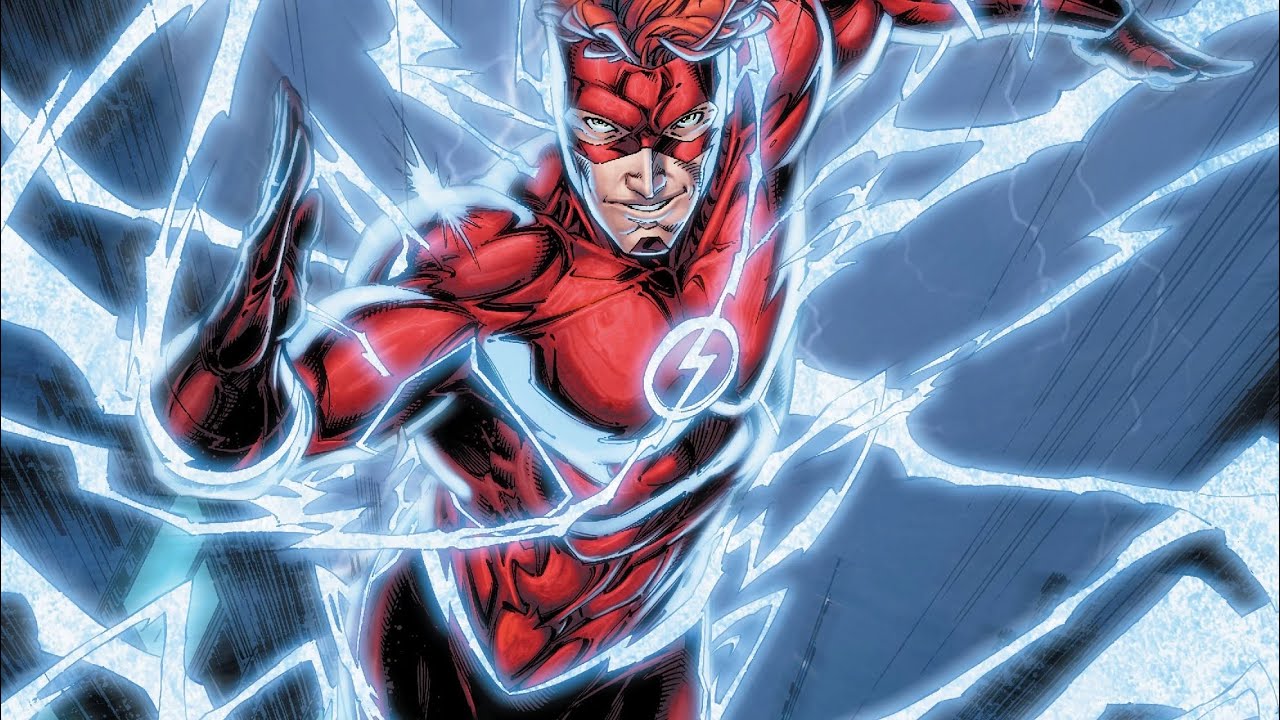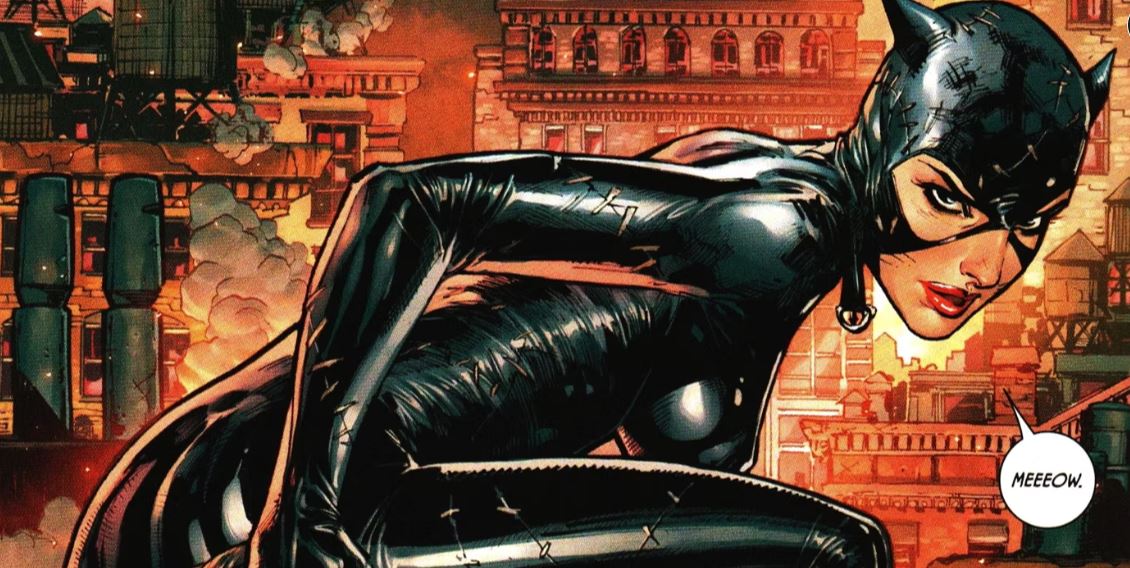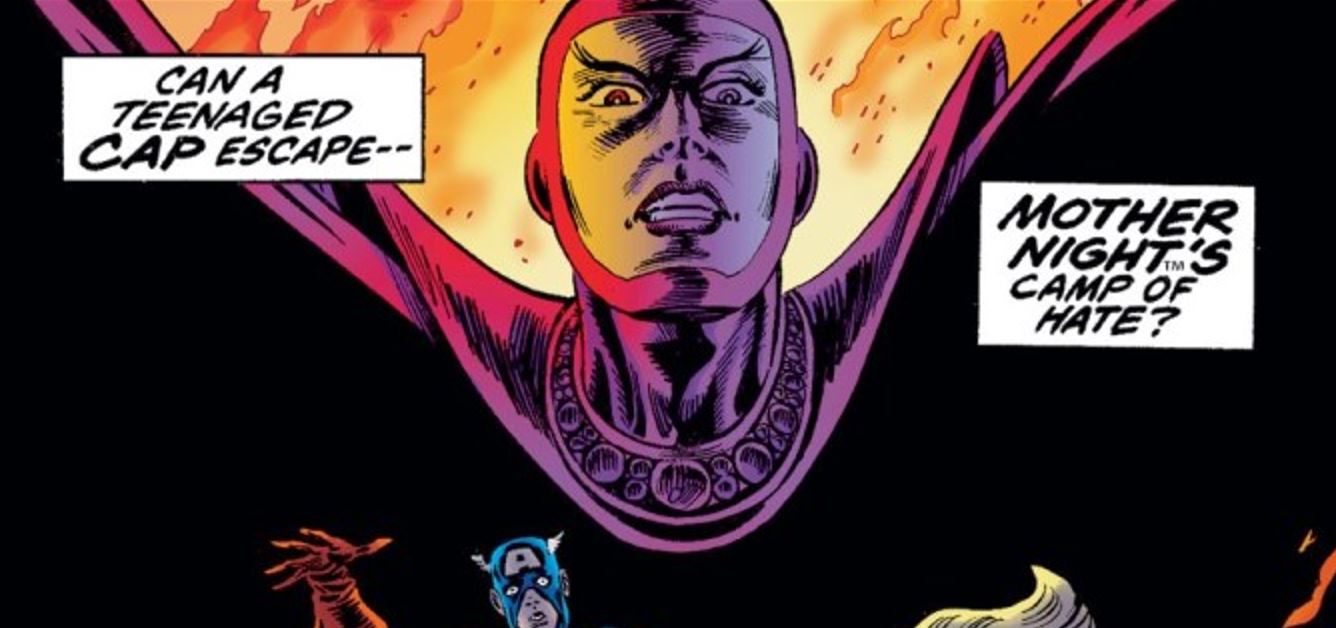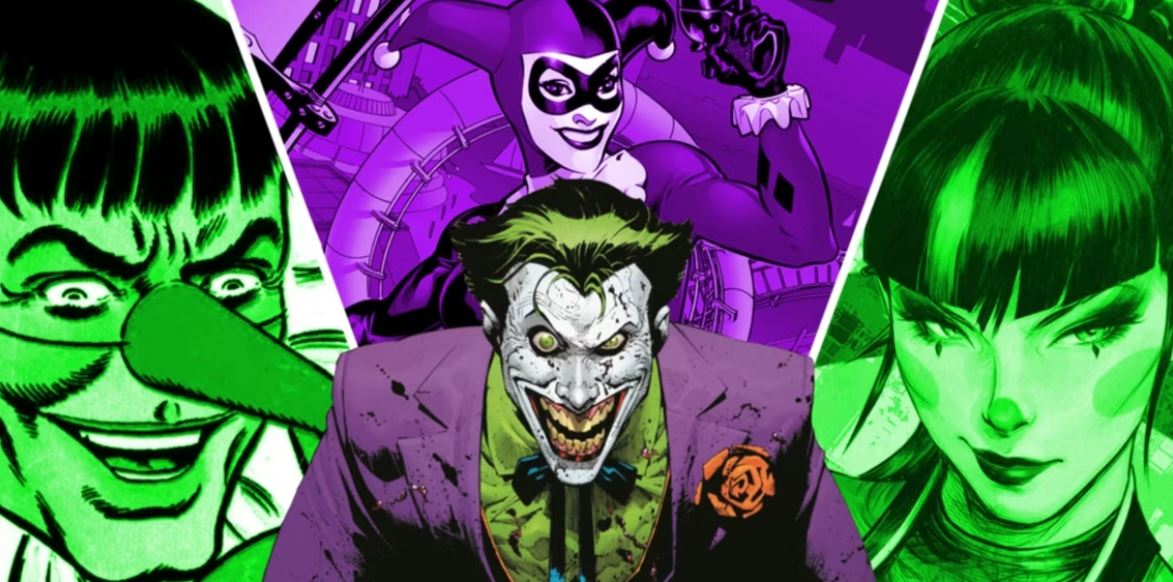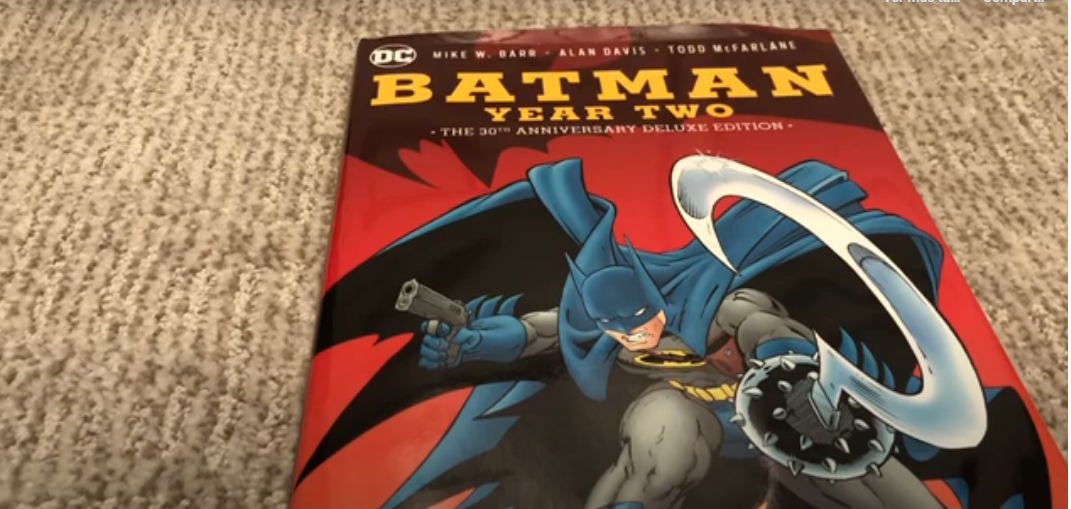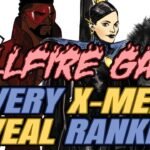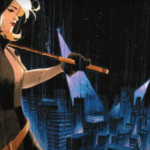“My name is Wally West, and I’m the Flash, the fastest man alive.”
Throughout the ‘90s and early ‘00s, those words appeared at the beginning of pretty much every issue of “The Flash.”
Wally West is my Flash. I started reading the series right around the time of 1994’s “Zero Hour” event and never missed an issue of Wally’s adventures. He wasn’t like my other favorite DC heroes, the Bat family. Wally was an everyman, a happy-go-lucky guy who LOVED being a superhero. Over the course of Mark Waid’s and Geoff Johns’ runs on the title, readers watched Wally move out of the shadow of his uncle, Barry Allen, the previous Flash, get married and become a father, all while fighting both classic and new Rogues.
When Barry returned, Wally was put on the back burner. And then “Flashpoint” erased him from existence, rewrote him as a completely different character, then retconned that character into the original Wally’s cousin when that Wally returned. And if that wasn’t enough comic book nonsense, the loss of his family turned the usually happy Wally into a haunted character, and Tom King and Clay Mann’s “Heroes in Crisis” cemented that pretty firmly.
But this week, Wally is getting a new miniseries all to himself, “Flash Forward,” and so I decided to write about four of my favorite Wally West stories.
The Return of Barry Allen (Flash Vol. 2 #73-79)
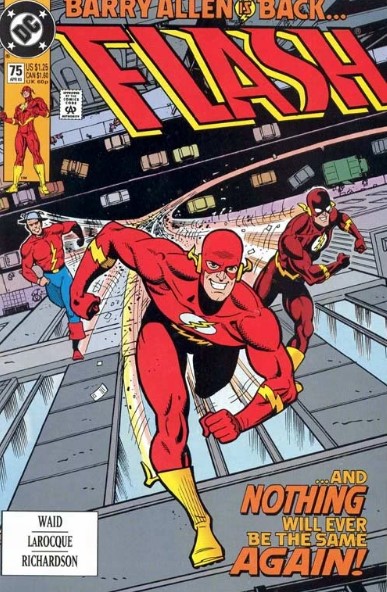
If any one story could be called the definitive Wally West story, it is probably “The Return of Barry Allen.” This is a story fairly early in Waid’s nearly decade-long run on the title, and sets up many of the threads Waid would pull on for the duration of the run. But more important than that, it plays with the theme that defines so much of that run – Wally’s feeling of legacy to Barry’s Flash – and the theme Waid was trying to leave behind – Wally’s sense of inadequacy in comparison to Barry.
The title of the story is pretty self-explanatory: At the very end of “Flash” #73, Barry Allen shows up, alive but with some memory loss. He once again takes on the roll of the Flash, teams up with Wally and Jay Garrick, the Golden Age Flash, and Wally couldn’t be happier. That is until Barry starts acting odd. Barry is angrier than Wally remembers, and when Barry leaves Wally for dead, proclaiming himself the one true Flash, Wally knows something is wrong. This is a 26-year-old story, but I still don’t want to ruin the reveal at the end, about why exactly “Barry” is acting the way he is, but Wally winds up defeating the man wearing Barry’s costume, proving he is faster than he ever thought he could be.
The end of this story really focuses on Wally pushing past the mental block that kept him from running faster than Barry. It established that so many of the power-related problems Wally had in previous writers’ runs were in Wally’s head, as he so loved and admired Barry that he couldn’t bear to eclipse him. Having moved beyond those blocks, the series was opened up to whole new vistas of potential storytelling. It also brought in two characters from the Golden Age not seen in some time, Johnny Quick and Max Mercury, who would prove more important as the run went on. And since what is a Flash story without a little time travel, it introduced the paperback copy of “The Life Story of the Flash,” a book that would serve as a plot point throughout much of Waid’s run, and was published as its own OGN five years later.
Terminal Velocity (Flash Vol. 2 #0, 95-100)
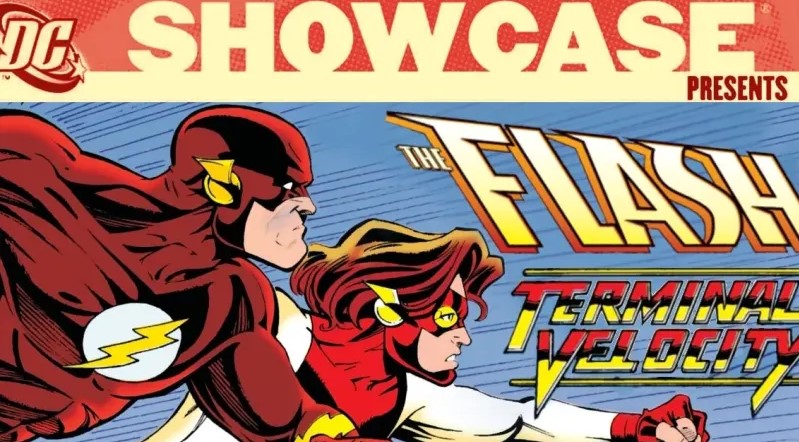
“Terminal Velocity” was the first Flash story I ever read, and I can think of few better stories to start with if you’re going to make someone into a lifelong Wally West fan. Written by Mark Waid and drawn alternately by then new artists Carlos Pacheco and Salvador Larroca, the story starts, unofficially, in the zero issue that spun out of “Zero Hour” and started in earnest in issue #95. The plot is pretty simple: The Cult of Kobra, a death cult that is one of the big bads of the DC Universe, makes a play to take over Wally’s home of Keystone City. Wally has to stop them, after returning from a trip through time caused by “Zero Hour.” There are two major problems, though. One is that he has learned that, on top of taking over the city, Kobra will kill his love, Linda Park. Also, now that he can run faster than he ever has, he is finding it harder to stop, and every time he approaches his highest speed, he is being converted into pure energy and pulled into … something.
Yes, while hinted at a few issues before, this is the story that establishes the Speed Force as a thing. Max Mercury, the zen guru of speed, tells the Flash family about what it is, and his centuries-long encounters with it. Anyone who has read any Flash comics since then knows what a big deal the Speed Force is to Flash mythology. This story also establishes the Flash family very firmly. Before this, there was Jay Garrick, sure, but he was the only speedster whom Wally interacted with regularly. This story adds Max Mercury and Johnny Quick as regular supporting cast members, and makes Impulse, who had just appeared for the first time three issues prior, Wally’s de facto sidekick, even though neither really wanted it. And on top of all that, Jesse Quick, Johnny’s daughter who had only appeared as a supporting character in a couple JSA comics, joined the book as well, bringing all of DC’s speedsters under one roof.
Wally struggles to save Linda and not be sucked into the Speed Force, but he keeps trying. And that’s because he’s a hero, and because he loves Linda more than anything. And when he finally succeeds in saving her from the death he saw, but is in the process pulled into the Speed Force, he finds his way back because Linda is there. Linda is his anchor, and would serve as such through so many Flash stories. How you could not love a character so full of love and heroism is beyond me, because I did from this story onward.
In the first paragraph, I mentioned that this story started unofficially in “Flash” #0. For those unfamiliar, after continuity was tweaked in “Zero Hour,” DC released an issue zero for each title to provide a good jumping-on point for readers. “Flash” #0 is probably the best of those issues. It follows Wally as he is catapulted back in time, stopping at key moments in his life. You get to see Wally’s life from his point of view, and in the end he winds up back when he was a kid, at a family party where he is staying in his room to hide from his fighting parents. There, the adult Wally has a heart-to-heart with his younger self, assuring him things will get better, It’s a very sweet scene, and something Waid had seeded issues before. If you need one issue to give you a feel for who Wally is, this is it.
Three of a Kind (Green Lantern Vol. 3 #96, Green Arrow Vol. 2 #130, Flash Vol. 2 #135)
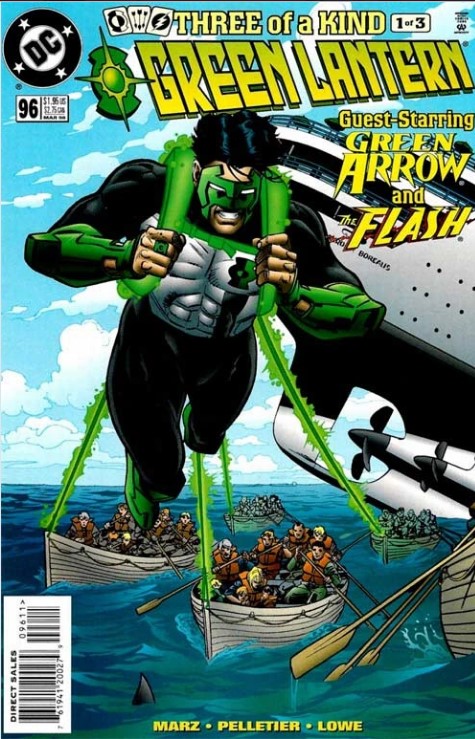
OK, I can understand that some people are going to look at this list, look at this entry and be confused or annoyed. I don’t have “Dead Heat,” the story of the Flash family versus Savitar and his speed cult. I don’t have “Blitz,” the introduction of Zoom. I don’t even have either of the tip-top “Justice League Unlimited” episodes starring Wally, “The Great Brain Robbery” or “Flash and Substance,” but I have this obscure little crossover.
Why? Well, first, this is my column and I’ll do what I like. And more to the point, Wally West is a fun character who was a star of the ‘90s, and this is a fun story that couldn’t be more DC in the ‘90s.
“Three of a Kind” features none of the traditional versions of its title heroes. The Flash here is Wally West, the Green Lantern is Kyle Rayner and the Green Arrow is Connor Hawke. These are the ‘90s legacy versions of these heroes, back when legacy was DC’s keyword and not nostalgia. There are a few stories where two of these guys team up, and a few with all three, but this one is the main story where they go on an adventure together, and it’s a simple delight. There’s peril, action and adventure, but it’s not some grim story. These are three buddies travelling together, without the sniping you tend to get when Hal Jordan is trying to play peacemaker between his square, law-and-order pal Barry and his super-liberal buddy Oliver Queen.
The story finds the three heroes on a cruise together, just trying to relax. But as the laws of comic books tell us, when two or more heroes are together, even in their civilian identities, they are going to find some way to attract supervillains. A villain from each of their rogues galleries happens to be on the ship, transporting the unconscious supervillain Dr. Polaris. The “Flash” issue is a little more intense, as yearlong fill-in writers Grant Morrison and Mark Millar not only wrap up the story but add a courtroom drama aspect to it, but it’s still very much a superhero adventure story featuring three super friends fighting three supervillains, and sometimes, that’s all you can ask for in a tights-and-capes comic.
Rogue War (Flash Vol. 2 #½, 220-225)
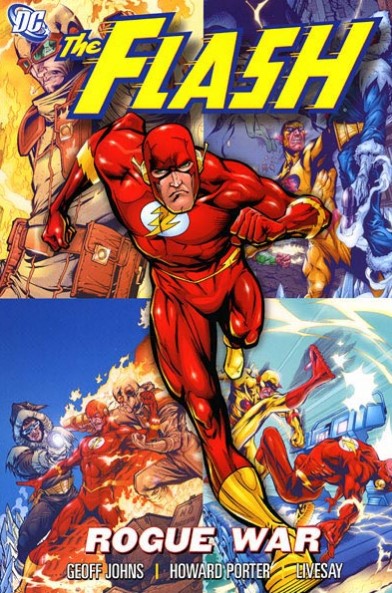
I couldn’t write this list without including at least one Geoff Johns story, as much as I couldn’t without including at least one Mark Waid story. The two writers wrote more than 150 issues of “Flash” between them, and defined Wally West as a character. And as this list started with Waid’s first Wally epic, I thought it appropriate to end it with Johns’ last: “Rogue War.”
The other stories on this list are mostly self-contained, easy-for-new-readers stories. “Rogue War” is not. It builds off of everything Johns had been doing in the title for nearly 60 issues, especially his spotlight on Flash’s rivals, the Rogues, the creation of new evil speedster Zoom, and the revelations from the then-recent DC event miniseries “Identity Crisis.” The reveal that Barry Allen was complicit in the mental alterations of some of the Rogues to make them less criminal has affected both the villains and Wally himself, and now factions have formed, with many traditional Rogues siding with Captain Cold, and newer Rogues and Cold’s frenemy Heat Wave falling in line behind the Trickster and a resurrected Top.
Wally also must contend with his former ally Hunter Zolomon, who became the evil speedster Zoom during the “Blitz” storyline that led up to issue 200, which ended with Linda miscarrying her and Wally’s twins. Zoom has returned to make Wally a better hero by showing him even more suffering. And while Linda, Zolomon’s ex-wife, the profiler Ashley, and the Keystone PD deal with the Rogues, Wally must face down both Zoom and the Reverse Flash, Eobard Thawne, with some time-travel assistance from Barry Allen.
It’s an epic ending, the final Wally West story before a fill-in that ended the series and the events of “Infinite Crisis” changed his life forever. Other than figuring in characters from across Flash history and some great action art from Howard Porter, the story gives Wally a happy ending. Johns had put Wally through an absolute wringer for nearly two years when this story started, and in the end, he gets a redo on the events that cost him his children, and gets them back, making his decades-long transition complete.
The Wally who appeared in the pre-Waid “Flash” stories was an ‘80s yuppy who was vapid and kind of a jerk. This story ends with a Wally who is a happy, grown-up family man. Even though it couldn’t last, it was a great moment for the character, and one this fan remembers fondly.
Related Post:
[the-post-grid id=”2476″ title=”Wally West Flash”]

